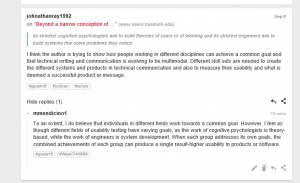Memorandum of Understanding Text
Hi Sabine!
I hope you are doing well! Since our presentation, my group and I have discussed deliverable ideas with Dr. Wharton. As you and Brandy have discussed, environmental safety during the shelter renovation is a top priority. That being said, we believe that the best way to execute our project is by focusing on signage related to environmental safety. Below, I have outlined our service learning project with a short description of each potential sign as well as a general schedule overview. Feel free to let us know if you have any questions, concerns, or suggestions. Thanks again for the opportunity to work with Our House!
Signage Descriptions:
Child Safety Sign: Based off of Johnathan’s portion of the presentation, this sign would outline important child safety tips, such as the importance of putting infants to sleep on their back and guidelines regarding choking hazards of small toys. These would potentially be displayed in common areas and in the bedrooms.
Emergency Procedure Sign: Based off of my portion of the presentation, this sign would provide instructions for evacuation and protocol in emergency situations such as a fire or a lockdown; it would also include directions to the nearest fire extinguishers and alarms. These would be displayed in the bedrooms and in stairwells.
Trauma Awareness Sign: Based off of Shademah’s portion of the presentation, this sign would include instructions for seeking help in trauma-related situations as well as general advice for mothers experiencing PTSD and similar circumstances. These would be displayed in the common area and in the caseworkers’ offices.
Renovation Newsletter Sign: Based off of Chelsea’s portion of the presentation, this sign would provide residents with an update of the renovation process, what the shelter will look like post-renovation, and how the renovation will affect them in the upcoming months. This would be displayed in the common area.
Service Learning Project Schedule:
| October 25 | Confirm Official Signage Design |
| November 1 | Design Mock-Up Submitted to Our House |
| November 8 | Content Draft Submitted to Our House |
| November 16 | Second Draft Submitted to Our House |
| November 29 | Presentation of Final Deliverables |
| December 2 | Final Service Learning Packet Delivered to Our House |
Again, feel free to contact me with any commentary or questions you may have. We look forward to continuing this project with Our House!
Thank you so much!
Miranda Mendicino
Chelsea Cooper
Johnathan Worsham
Shademah Neal


